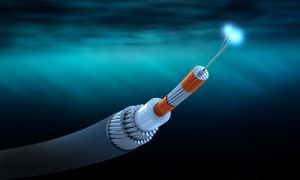
The recent reports of damage to a submarine telecommunications cable linking Finland and Estonia have focussed attention on the vulnerability of under-sea cables to damage both accidental and deliberate.
Over 400 optical fibre cables span the globe carrying over 99% of international telecommunications.
The effect of damage to these cables was demonstrated in 2008 when two cables (FLAG and SEA-ME-WE-4) were severed off the Egyptian coast. This resulted in severe disruption of data connectivity between Europe, the Middle East, and the Indian sub-continent. The severity of this event was exacerbated by the break in two cables so removing an alternative route. It has been reported that the damage was caused by the dragging of a ship’s anchor.
This was not an isolated incident: 100-150 submarine cables are severed each year, the majority due to fishing gear, or dragging anchors. Because of the frequency of cable disruption, a fleet of cable ships is kept on standby around the world to carry out repairs.
The possibility of the sabotage of maritime infrastructure has come to the fore due to recent events such as the damage to the gas pipeline between Russia and Germany with the finger of blame pointed at Russia. It has been reported that both Chinese and Russia ships were in the area when the damage to the Estonia-Finland cable occurred.
The incidents of damage to a nation’s submarine cable by another nation are not new. In fact, Britain pioneered cable cutting at the outbreak of World War 1 when the British ship Alert deliberately severed German submarine telegraph cables cutting off almost all of Germany’s communications with the outside world. This led to the Germans having to use Britain’s extensive global network which of course was monitored by the nefarious British.
More recent suspicions of sabotage have led to countries considering how to combat such activities. There are two main ways of achieving resilience: Providing more diverse routes with more cables and monitoring activities around existing cables.
The European Union executive has recommended that its members devise a “Secured Subsea Infrastructure for Europe” strategy. This could include a “EuroRing” of cables as a backbone for Europe’s own internet traffic.
The United Kingdom has commissioned two Multi-Role Ocean Surveillance (MROS) ships which will have the role of safeguarding critical undersea infrastructure. The first, RFA Proteus, entered into service this year.
PTT’s online “Telecommunications networks” course includes information about submarine cable systems. PTT’s “Telecommunications system security” course discusses the types of threat to telecoms networks and the measures that should be taken to protect them.